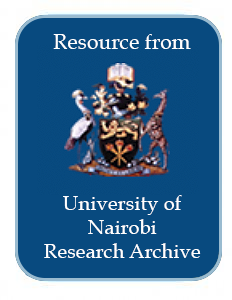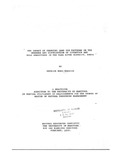Location
Our Vision is to be a world-class university committed to scholarly excellence.
Our Mission is to provide quality university education and training and to embody the aspirations of the Kenyan people and the global community through creation, preservation, integration, transmission and utilization of knowledge.
Core Values
In order to realize the above vision and mission, certain shared values shall be nurtured. There is great need for the University to be guided by the right values derived from the virtues and moral standards of the Kenyan and wider society.
Core Functions
Teaching and Learning: The university offers innovative , relevant and market driven academic programmes , both at undergraduate and postgraduate levels with inbuilt quality control systems the university also provides an environment and policy framework for undertaking high quality and relevant research
Members:
Resources
Displaying 256 - 260 of 298Indigenous flora conservation in Kenya.
This paper describes the environmental degradation that has occurred in Kenya since early this century, initially due to the introduction of plantation farming. Forests have been further targeted for farmland, fuel wood, building materials and hardwood species. Range land species have also become threatened due to continued infiltration of the population. The discussion considers the efforts of the Kenyan government to legislate and administrate against the further loss of natural resources and the consequent development of environmental awareness among the populace.
Effects of industries and other land use systems on the water Quality within the Nairobi river sub-catchments, Kenya.
This thesis examines water quality status and deterioration in the Upper-
Athi-Nairobi sub-catchments which covers an area of 1154.4 km2 with an annual
discharge rate of 99242 m3/year (9.9 X 104 m3/yr). It is based on field and
laboratory analysis of water quality parameters.
The subject matter includes the assessment of land use processes
responsible for water quality deterioration. These include Industrial and
Agricultural activities. The study demonstrates how useful industrial
The impact of changing land use patterns on the numbers and distribution of livestock and wild herbivores in the Tana River District, Kenya
The intent of this study was to examine the impact of
changing land use patterns on the numbers and distribution
of livestock and wild herbivores in the Tana River District,
Kenya.
A multi-method approach of aerial surveys,
questionnaires, interviews and secondary data sources were
employed to realize the objectives.
Results indicate that changes in land use patterns and
types have created conflicts that led to the reduction of
the range and affected distribution of pastoral livestock
Statutory Land Control and the Small holder Land System in Kenya: A study of land control in the Nyanza Sugar belt.
It is generally acknowledged that
insecure and incomplete property rights have large effects on
the use and management of watershed resources.
The standard policy response to this problem is
to privatize farm land, declare riverine areas
to be public property, and establish a set of
restrictions on the use of both private and pub
lic land. This paper presents a more nuanced
concept of catchment property rights, drawing
upon key concepts from watershed hydrology and
the multidisciplinary social science of property
The Education of Adult Refugees in Somalia
At least 20 percent of the Somalian population are refugees, many from Ethiopia. The Refugee Adult Education Unit has a preliteracy phase, offering health and agricultural instruction; a basic literacy phase, teaching reading and writing; and a postliteracy/continuing education phase, enabling skill retention and reinforcement. (SK)



